Titan V benchmarks have been cropping up for the past week, giving us a deeper look into Nvidia’s new Volta architecture across a variety of tools. This time, the card is put through its paces against modern games using the ever-popular Futuremark 3DMark benchmarking software. Oh, hi Mark.
Under the hood of the $3,000 Titan V are 5,120 shader units with memory clock of 1,850 MHz. A lot of its cost comes from swapping the GDDR5 bus type to make use of the expensive HBM2 instead, usually found on professional cards such as Nvidia’s Tesla P100 and V100.
Images supplied by EHA partner HardwareLuxx. AdBlock is known to conflict with our imaging code. Please disable this for the full article.
It seems like a lot of this goes to waste when it comes to gaming, as the Titan V gives just a 15 – 20 percent increase across DX11, DX12 and Vulkan APIs. According to our friends over at HardwareLuxx, this can jump to a peak of 35 – 40 percent thanks to the increased shaders, but this often leaves silicon going underutilised.
A lot of the time, the Titan V seems to contend with the high-speed GTX 1080 Ti variety of cards, actually losing out to the Caseking KingMod GeForce GTX 1080 Ti FE under 3DMark’s Fire Strike Extreme preset, but managed to take the top spot back in Fire Strike Ultra. This averages at approximately 30 percent quicker than the Nvidia Founder’s Edition 1080 and scrapes just over 12 percent faster than the 1080 Ti.
Regarding in-game performance, the Titan V tends to show significant performance increases over other Nvidia GPUs when pushed to 4K resolution. This is particularly evident with Star Wars Battlefront II, where it peaks 24 frames per second higher than the GTX 1080 Ti, and in PUBG with a peak of 11 frames per second higher. One thing that is noticeable, however, is that the Titan V often has a greater ranger between its average frames per second and its peak.
If Volta follows in the footsteps of its predecessor, Pascal, in terms of consumer releases for cards, it could be a long while before we see Nvidia cater to the low, mid and high end sufficiently. Still, Nvidia’s Titan V kicks things off in order to appeal to professional users first and foremost, and we should see reduced and optimised cards trickle down to a more consumer friendly price point throughout 2018.
KitGuru Says: Its price to performance might not suit gaming as well as we might have hoped, but the same rings true for almost any professional grade card. They work for games, but they aren’t built or optimised for them. More tests are being conducted across the board and we should see more on it in the near future.
 KitGuru KitGuru.net – Tech News | Hardware News | Hardware Reviews | IOS | Mobile | Gaming | Graphics Cards
KitGuru KitGuru.net – Tech News | Hardware News | Hardware Reviews | IOS | Mobile | Gaming | Graphics Cards


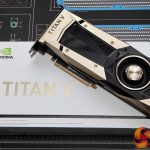


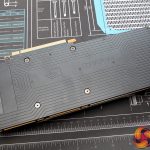


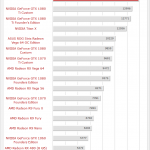
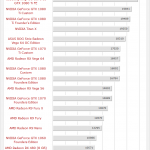
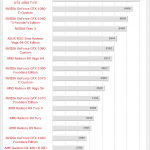







love the room reference made me chuckle .
Nvidia probably didn’t put much work into optimizing their gaming drivers for this card because there won’t be any gaming cards that come out with the architecture it is based on (Volta). Nvidia isn’t just going to sit on an architecture for 9+ months before they release their bread-and-butter gaming cards on it. Since the lag time was planned, Nvidia will have put that 9+ months to good use towards the improvement of their architecture. You can bet there will be significant architectural changes from Volta forthcoming in the next generation gaming cards.
You never know that, they could’ve put the geforce funding into the ever growing AI and self driving vehicles while sitting on Volta stock, there’s no way we’ll know if we get a generational skip or whether they’re sitting on old stock. That leaked photo of the titan Volta 6 months ago turned out to be true after all, who’s to say anything’s changed with the specs of the card in that photo and the specs the prosumers are now getting.
Besides, if they did retain their r&d for GeForce cards they could easily charge a premium for it. Sure they got healthy funding from cryptocurrency and continued demand for 1080ti but all they need to say is a 50%+ performance increase and can charge £1000 if they wanted
It does NVIDIA no good to sit on an architecture for 6 months. It loses value as it sits there. NVIDIA is continually developing their architecture. Think about it: if NVIDIA releases a 6 month old architecture then in those 6 months they’ve further developed their architecture. That 6 months of work then won’t be salable until over a year from the release of the 6 month old architecture. Lengthening product cycles is beneficial, but mistiming releases so that you are 6 months behind your actual development is inefficient and will cut into their revenue and profits. It make make sense to cancel a release early enough in the development process because the competition isn’t threatening, but it doesn’t make sense to hold back a product all ready for release only to release the exact same thing 6 months later.
Re: leaked photo of Volta 6 months ago. That has little to do with what I said. Little changed in that card since 6 months ago because the GV100 was available 6 months ago and the Titan V uses the GV100. The Titan V came out now because NVIDIA now has the yields on the GV100 to release the $3,000 Titan V while still meeting the demand for the $8,000+ Tesla V100.